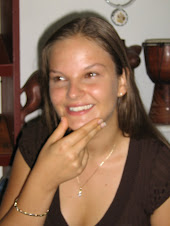
The first permanent colony of Europeans in the western hemisphere was established in the Dominican Republic. Santo Domingo was founded in 1496 by the brother of Christopher Columbus, was the first permanent city in the New World. Some of the old colonial buildings are still standing, fine examples of which are in Santo Domingo. The colonial center of Santo Domingo was declared a UNESCO World Heritage Site in 1990.
Art, music, and literature developed in part along Western patterns, with a strong African cultural component. The African heritage is especially notable in the country’s folk culture, particularly the music. The two traditions—African and Spanish—blend in the popular national song and dance, the merengue. Merengue music can be heard everywhere on the island, and every summer Santo Domingo holds a two-week merengue festival at which the world’s finest merengue bands and merengue dancers appear.
Most of the country’s major cultural institutions are in Santo Domingo. They include the Museo de las Casas Reales (Museum of the Royal Houses), a museum of colonial life; the Museo del Hombre Dominicano (Museum of the Dominican Man), with exhibits on pre-Columbian life on the island; and the Museo de Arte Moderna (Museum of Modern Art), with works by Dominican artists. The National Aquarium and National Botanical Garden, also in Santo Domingo, feature impressive displays. Puerto Plata on the north coast of the island has the Museo de Ambar, which displays unusual pieces of Dominican amber with plants and insects and other animals embedded inside them.
Among the country’s most beloved writers is Salomé Ureña de Henríquez, who is considered a national poet. She lived in the second half of the 1800s and in 1881 organized the Instituto de Señoritas, the first Dominican center of higher education for women. Her two sons, Pedro and Max Henríquez Ureña, became distinguished Latin American writers and thinkers.
Other Dominican writers include Gastón Fernando Deligne, a modernist poet of the late 1800s and early 1900s; Fabio Fiallo, author of delicate love lyrics in the early 1900s; Manuel de Jesús Galván, author of Enriquillo (1882), a historical novel based on an early Native American revolt against the Spaniards; and Manuel del Cabral, a versatile 20th-century poet whose work showed his strong sympathies with the country’s impoverished blacks.
Juan Bosch, president of the republic in 1963, was also the most distinguished Dominican writer of the mid 20th century, well known as a novelist, short story writer, and essayist.
Juan Bosch, president of the republic in 1963, was also the most distinguished Dominican writer of the mid 20th century, well known as a novelist, short story writer, and essayist.
Joaquín Balaguer, the republic’s president from 1986 to 1996, was also an accomplished writer on many topics. Much of the best known Dominican writing today comes from Dominicans who have emigrated. Julia Alvarez, who moved with her family from the Dominican Republic to New York City at the age of 10, has written about the collision of the two cultures in such works as the novel How the Garcia Girls Lost Their Accents (1991) and the children’s book How Tia Lola Came to Stay (2001).

No comments:
Post a Comment